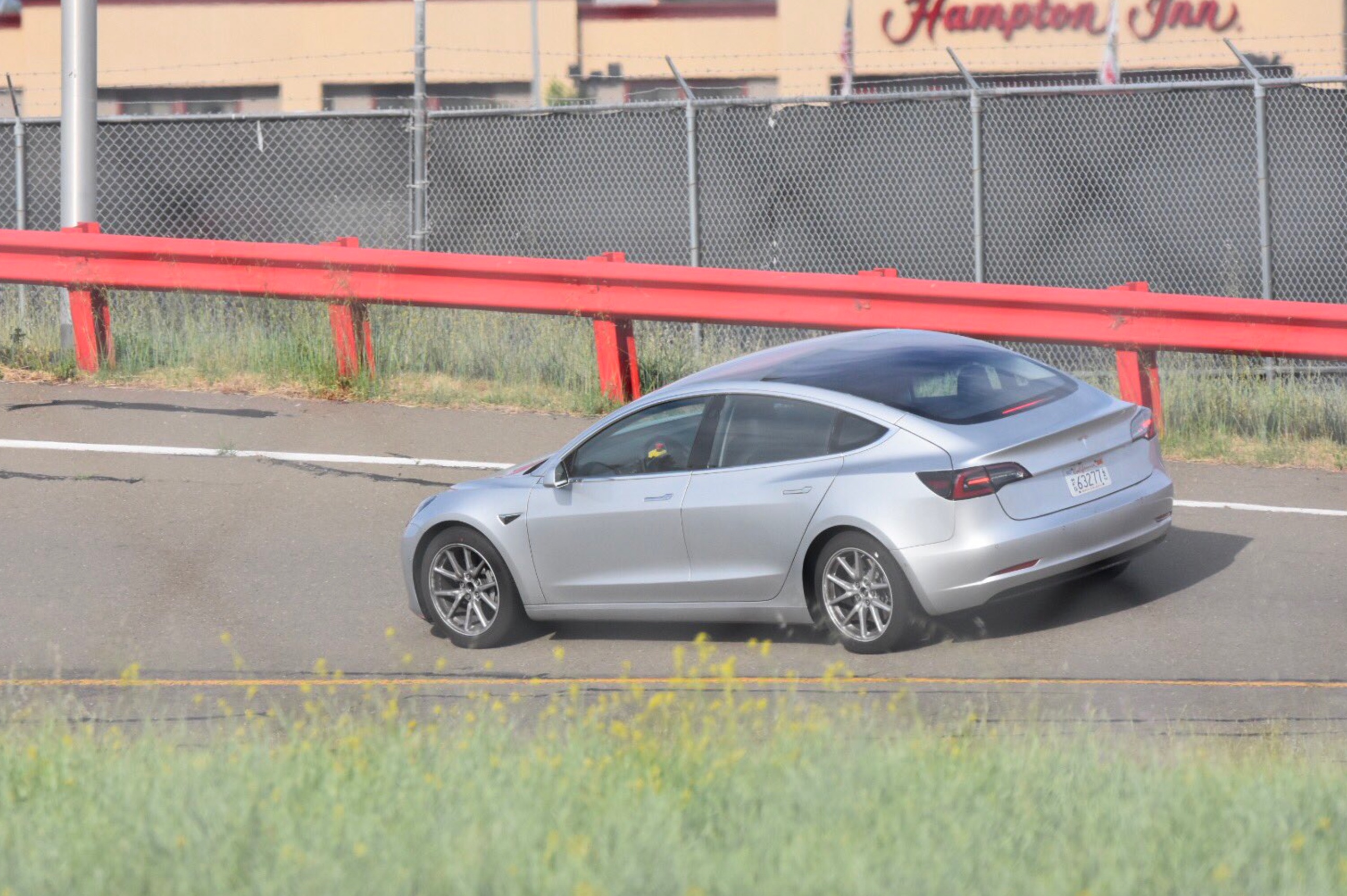

Investor's Corner
Tesla CEO Elon Musk’s love-hate relationship with ‘the media’
Negative media coverage is a fact of life for any company, large or small. However, as it does in so many areas, Tesla approaches this problem quite differently than most firms do. Conventional wisdom has long been that companies shouldn’t respond to attacks in the media, but Elon Musk never got that memo. He responds quickly, bluntly and often colorfully.
Lately, the anti-Tesla stories have been spewing forth like fastballs from a pitching machine – so quickly that you might think poor Elon has time to do little else than bat them away.
When a media outlet offers constructive criticism, Tesla often responds in a constructive way. When Consumer Reports announced that it wouldn’t recommend Model 3 because of the new EV’s poor performance in a braking test, Elon Musk immediately promised to look into the matter. Within a week Tesla had improved Model 3’s braking via an over-the-air software update, and CR awarded the coveted Recommended rating.
On the other hand, the Iron Man has never been shy about calling BS when he feels Tesla has been portrayed unfairly. To take just one example, Business Insider has been a frequent purveyor of anti-Tesla pieces, including one that claimed Model 3 production was producing an “insane amount” of scrap at Gigafactory 1, and another that accused the company of cutting corners by skipping a “critical” braking test.
In the first case, inside information was provided to Business Insider by a Tesla employee, Martin Tripp, who is now being sued by Tesla for sabotaging the company’s manufacturing software and stealing trade secrets (Tripp claims he is not a saboteur, but a whistleblower).

Above: Track testing the Model 3 at Tesla’s Fremont factory (Source: @TeslaClubBE)
Both of these hit pieces were written by Business Insider’s Linette Lopez, whom Elon Musk has accused of acting “as an inside trading source for one of Tesla’s biggest short-sellers” (apparently a reference to super-Tesla bear Jim Chanos) and “bribing” Mr. Tripp. The Twitter exchanges between Musk and Lopez have now degenerated into an undignified flame war.
So, cui bono from the flinging of all this mud and FUD? Obviously, media outlets, of both the respectable and gutter varieties, profit from the huge appetite for Tesla news of any kind. However, it would be hard to deny that, despite the best efforts of its critics, Tesla benefits from the endless controversies in the form of “free publicity that just raises the company’s profile and drives demand for its cars,” as Brooke Crothers writes in a recent Forbes article.
Tesla has been turning media lemons into publicity lemonade since the beginning. A 2008 snarky review of the Roadster and a 2012 turd-in-the-punchbowl article in the New York Times both evolved into media coups for Tesla (in the first case, the publicity was far from free – Tesla laid out a huge sum in legal costs). Both stories are told in detail in a certain book about Tesla.
In fact, Mr Crothers thinks the frequent media clashes have become “pretty predictable and pretty boring.” The Musk vs media trope has now evolved into what you might call “meta-coverage” – that is, media coverage about media coverage, for example, recent articles in the Times and CNBC.
Above: CNBC’s “Fast Money” crew discuss Elon Musk taking on the media (Youtube: CNBC Television)
Journalists who engage in sketchy reporting don’t damage Tesla’s brand, says Crothers. “In the end, it serves Musk’s cause to expose the media as hacks out to get him.”
When the custom-forged monoblock aluminum wheels hit the road, what matters is not the scare stories about fires, Autopilot crashes, cobalt, production problems, red ink, union-busting (we could go on, but you get the idea), but rather the quality of Tesla’s vehicles, and here even the company’s most ardent critics have little to say. The evil media, from mainstream car mags to amateur offerings on YouTube, overflows with rave reviews. The real winners in this battle would seem to be car buyers.
===
Note: Article originally published on evannex.com by Charles Morris

Investor's Corner
Tesla stock closes at all-time high on heels of Robotaxi progress

Tesla stock (NASDAQ: TSLA) closed at an all-time high on Tuesday, jumping over 3 percent during the day and finishing at $489.88.
The price beats the previous record close, which was $479.86.
Shares have had a crazy year, dipping more than 40 percent from the start of the year. The stock then started to recover once again around late April, when its price started to climb back up from the low $200 level.
This week, Tesla started to climb toward its highest levels ever, as it was revealed on Sunday that the company was testing driverless Robotaxis in Austin. The spike in value pushed the company’s valuation to $1.63 trillion.
Tesla Robotaxi goes driverless as Musk confirms Safety Monitor removal testing
It is the seventh-most valuable company on the market currently, trailing Nvidia, Apple, Alphabet (Google), Microsoft, Amazon, and Meta.
Shares closed up $14.57 today, up over 3 percent.
The stock has gone through a lot this year, as previously mentioned. Shares tumbled in Q1 due to CEO Elon Musk’s involvement with the Department of Government Efficiency (DOGE), which pulled his attention away from his companies and left a major overhang on their valuations.
However, things started to rebound halfway through the year, and as the government started to phase out the $7,500 tax credit, demand spiked as consumers tried to take advantage of it.
Q3 deliveries were the highest in company history, and Tesla responded to the loss of the tax credit with the launch of the Model 3 and Model Y Standard.
Additionally, analysts have announced high expectations this week for the company on Wall Street as Robotaxi continues to be the focus. With autonomy within Tesla’s sights, things are moving in the direction of Robotaxi being a major catalyst for growth on the Street in the coming year.
Elon Musk
Tesla needs to come through on this one Robotaxi metric, analyst says
“We think the key focus from here will be how fast Tesla can scale driverless operations (including if Tesla’s approach to software/hardware allows it to scale significantly faster than competitors, as the company has argued), and on profitability.”

Tesla needs to come through on this one Robotaxi metric, Mark Delaney of Goldman Sachs says.
Tesla is in the process of rolling out its Robotaxi platform to areas outside of Austin and the California Bay Area. It has plans to launch in five additional cities, including Houston, Dallas, Miami, Las Vegas, and Phoenix.
However, the company’s expansion is not what the focus needs to be, according to Delaney. It’s the speed of deployment.
The analyst said:
“We think the key focus from here will be how fast Tesla can scale driverless operations (including if Tesla’s approach to software/hardware allows it to scale significantly faster than competitors, as the company has argued), and on profitability.”
Profitability will come as the Robotaxi fleet expands. Making that money will be dependent on when Tesla can initiate rides in more areas, giving more customers access to the program.
There are some additional things that the company needs to make happen ahead of the major Robotaxi expansion, one of those things is launching driverless rides in Austin, the first city in which it launched the program.
This week, Tesla started testing driverless Robotaxi rides in Austin, as two different Model Y units were spotted with no occupants, a huge step in the company’s plans for the ride-sharing platform.
Tesla Robotaxi goes driverless as Musk confirms Safety Monitor removal testing
CEO Elon Musk has been hoping to remove Safety Monitors from Robotaxis in Austin for several months, first mentioning the plan to have them out by the end of 2025 in September. He confirmed on Sunday that Tesla had officially removed vehicle occupants and started testing truly unsupervised rides.
Although Safety Monitors in Austin have been sitting in the passenger’s seat, they have still had the ability to override things in case of an emergency. After all, the ultimate goal was safety and avoiding any accidents or injuries.
Goldman Sachs reiterated its ‘Neutral’ rating and its $400 price target. Delaney said, “Tesla is making progress with its autonomous technology,” and recent developments make it evident that this is true.
Investor's Corner
Tesla gets bold Robotaxi prediction from Wall Street firm
Last week, Andrew Percoco took over Tesla analysis for Morgan Stanley from Adam Jonas, who covered the stock for years. Percoco seems to be less optimistic and bullish on Tesla shares, while still being fair and balanced in his analysis.

Tesla (NASDAQ: TSLA) received a bold Robotaxi prediction from Morgan Stanley, which anticipates a dramatic increase in the size of the company’s autonomous ride-hailing suite in the coming years.
Last week, Andrew Percoco took over Tesla analysis for Morgan Stanley from Adam Jonas, who covered the stock for years. Percoco seems to be less optimistic and bullish on Tesla shares, while still being fair and balanced in his analysis.
Percoco dug into the Robotaxi fleet and its expansion in the coming years in his latest note, released on Tuesday. The firm expects Tesla to increase the Robotaxi fleet size to 1,000 vehicles in 2026. However, that’s small-scale compared to what they expect from Tesla in a decade.
Tesla expands Robotaxi app access once again, this time on a global scale
By 2035, Morgan Stanley believes there will be one million Robotaxis on the road across multiple cities, a major jump and a considerable fleet size. We assume this means the fleet of vehicles Tesla will operate internally, and not including passenger-owned vehicles that could be added through software updates.
He also listed three specific catalysts that investors should pay attention to, as these will represent the company being on track to achieve its Robotaxi dreams:
- Opening Robotaxi to the public without a Safety Monitor. Timing is unclear, but it appears that Tesla is getting closer by the day.
- Improvement in safety metrics without the Safety Monitor. Tesla’s ability to improve its safety metrics as it scales miles driven without the Safety Monitor is imperative as it looks to scale in new states and cities in 2026.
- Cybercab start of production, targeted for April 2026. Tesla’s Cybercab is a purpose-built vehicle (no steering wheel or pedals, only two seats) that is expected to be produced through its state-of-the-art unboxed manufacturing process, offering further cost reductions and thus accelerating adoption over time.
Robotaxi stands to be one of Tesla’s most significant revenue contributors, especially as the company plans to continue expanding its ride-hailing service across the world in the coming years.
Its current deployment strategy is controlled and conservative to avoid any drastic and potentially program-ruining incidents.
So far, the program, which is active in Austin and the California Bay Area, has been widely successful.








